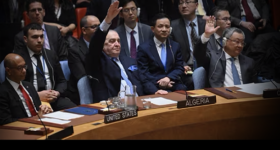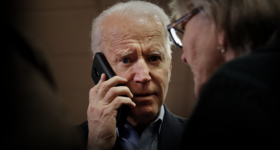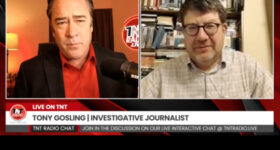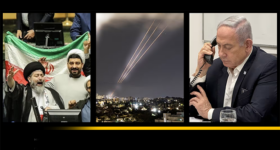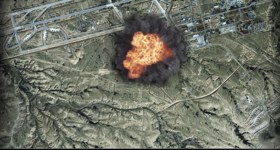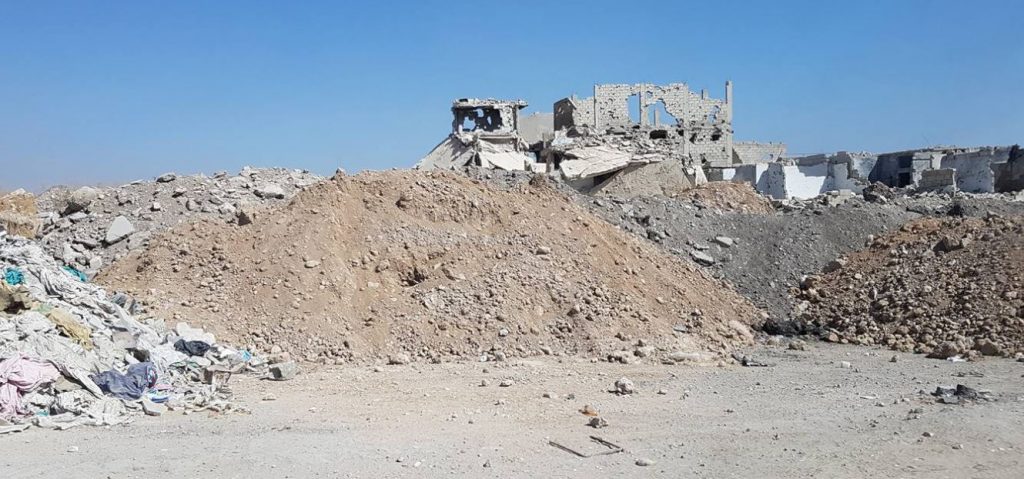
East Ghouta south of Jobar and south of the Barada river. (Photo: Tim Anderson)
Tim Anderson
21st Century Wire
Just south of the Jabhat al Nusra held town of Ayn Tarma a Syrian Army colonel tells our small group that he is keen to attack the terrorists in Jobar. However army orders for the green belt east of Damascus (the East Ghouta) are currently more in the nature of a ‘holding brief’. Strategic considerations control any offensive. In the meantime large earth, concrete and metal barriers quarantine the terrorist held parts of the East Ghouta, and provide some protection from snipers. Of course the Army responds quickly to attacks, which are frequent.
When we visited Abbassiyeen Square, on the western perimeter of the quarantined area, a shell had landed 5 minutes earlier. It was still on the footpath, where it had injured a young girl. Already planes were in the air and the army was moving on the ground, for a quick response.
Abbassiyeen Square is one of several areas close to Jobar, a salient of the Nusra held East Ghouta which pokes into the east side of Damascus like a dagger. From Jobar rockets and mortars are launched into the eastern part of the historic old city. The suburb itself has been a wasteland for many years now. Why has the army not taken over Jobar, many Syrians ask? This is one of the puzzles of the East Ghouta war.
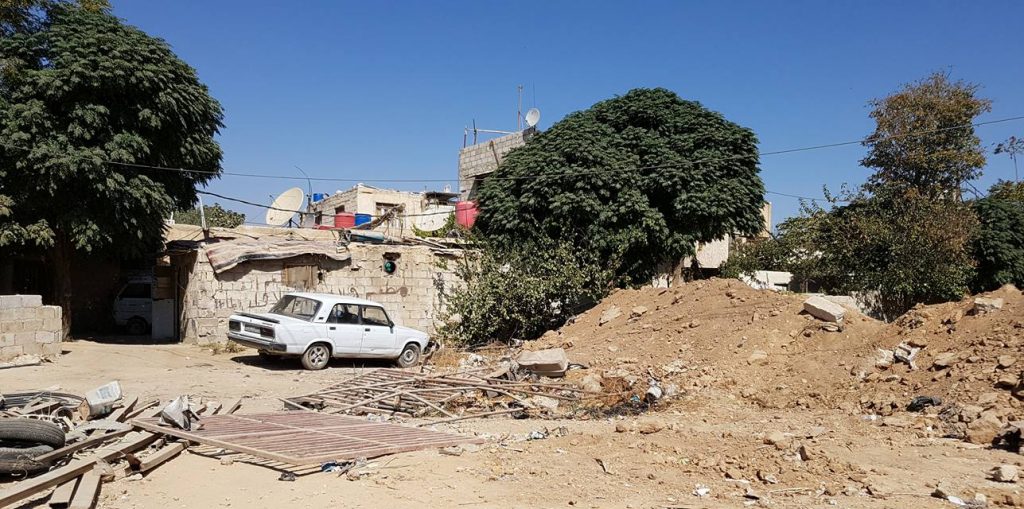
A very small number of civilian still live in this area, despite the regular shelling. (Photo: Tim Anderson)
When I first visited Damascus four years ago an experienced soldier surprised me by saying that there were close to 40,000 fighters in the East Ghouta. That is a very large army. Today, our colonel estimates there are still many thousands, but less than 10,000. And they have many thousands of hostages. Most are held in the prison of the de facto capital of East Ghouta terrorism, Douma city. They are also put to work. Two main groups of sectarian jihadists operate in the East Ghouta: Jaysh al Islam (the Army of Islam), a Syrian-led group which controls Douma; and Jabhat al Nusra (al Qaeda in Syria, and still referred to by that name, despite two attempts at name change), the international al Qaeda group set up to support the Syrian salafists. They carry out most of the attacks on the military and on Damascus city.
Unlike in northern Syria, where al Nusra has been led by NATO-trained and equipped Chechens, Libyans, Afghans and Turkomens, in the East Ghouta the main foreigners of Jabhat al Nusra (this group also recruits Syrian children and unemployed men) are less well trained Saudis. Most of the time Jaysh al Islam and al Nusra cooperate. Only occasionally do they squabble over money and territory. Saudi Arabia has been the principal sponsor of both.
The hostages provide several key benefits for the gangs. First they are an important slave labour force in tunnel digging, second they are used as human shields, to deter air attacks; and finally they have been sacrificed at times as victims of ‘regime’ attacks, in ‘false flag’ incidents. No-one has any real idea of the numbers of hostages; but many civilians and soldiers are still missing.
Despite the apparent intractability of this ‘war within a war’, the Syrian Army has made progress in the East Ghouta. Over 2014-2016 they liberated the entire east Ghouta south of the Barada river. That included protection for Al Mleha, and for the large south eastern suburb of Jaramana. Earlier this year there were successful ‘reconciliations’ (conditional surrenders) in the large northern Damascus suburbs of Barzeh and al Qaboun. Many signed amnesty agreement with the government. Thousands more fighters and their families were sent on green buses to Idlib. That helped tighten the cordon from the north.

Jobar, in the distance, across the river. Jabhat al Nusra (all sides seem to still use that name, despite 2 attempts at a name change) is the group involved in most attacks and in occupying Jobar, Ayn Tarma and Kafr Batna. (Photo: Tim Anderson)
The Syrian Army south of the river faces the Nusra-held areas of Jobar, Ayn Tarma and Kafr Batna to the north. Major roads have been cut. For example, Almotahalik al Janobi Street, which used to run from al Midan to Harasta (and between Jobar and Ayn Tarma) is cut south of the Barada. The road is still used by Nusra to take their hostage workers from Douma to east Jobar. Damascus roads east from Bab Touma and Abbassiyeen Square are cut, having become restricted military zones.
In the northern sector the Army and the jihadists actually share control of Harasta (Army intelligence has a key centre there), while Douma remains in the hands of Jaysh al Islam. That city has a significant number of Syrian collaborators, though its population has shrunk a great deal over the years, with evacuations. The sniper problem from Harasta has meant that, for many years, the northern highway into and out of Damascus has been diverted west of Mount Qasioun. The East Ghouta before the war had a thriving economy of agriculture, industry (clothes, food processing), recreation (swimming pools, amusements parks) and events (weddings, etc). Now the area is mostly uninhabited except for the army. However some industries run by the army are ongoing, such as clothes and food and drink processing. Some civilians are still there, indeed some never left.
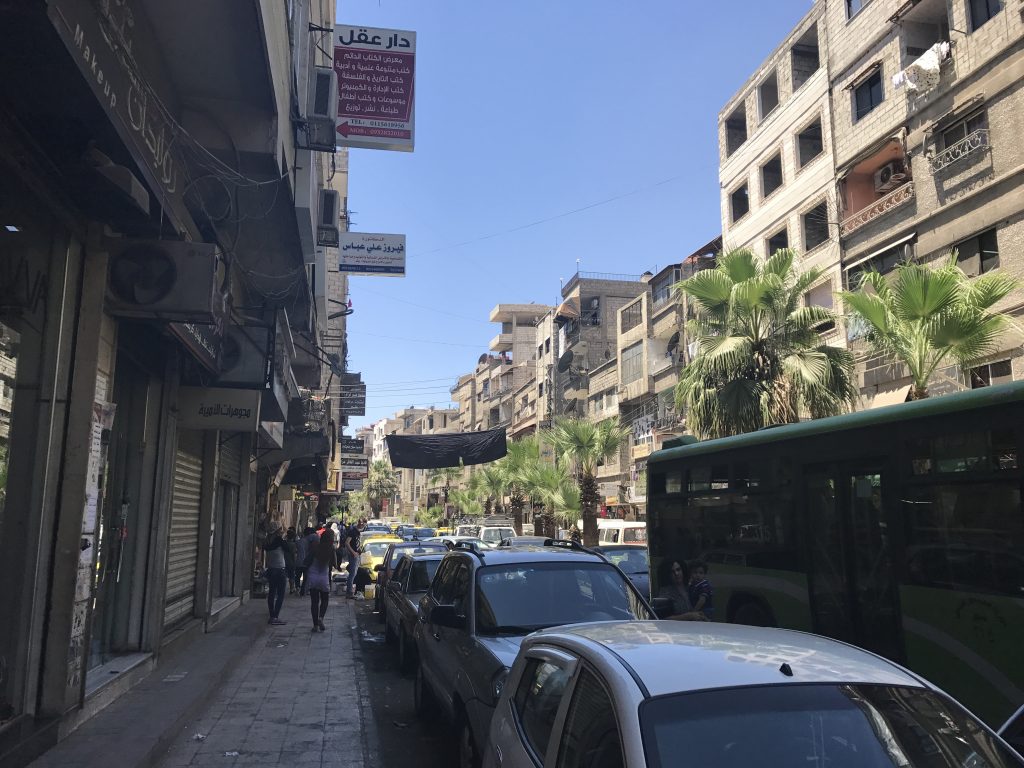
Jaramanah in Damascus which is now home to many refugees from E Ghouta and all areas of Syria. (Photo: Vanessa Beeley)
The long term nature of this war has brought some odd ‘normalisation’. All sides have to feed their families. The Government provides services including electricity and public service salaries to terrorist held areas. Crafts such as embroidered tablecloths from Douma are sold in the old city of Damascus. And, as we spoke with the colonel, we ate grapes from Douma. A local businessman estimates that the Saudi financing of East Ghouta gangs brings about $250 million into the local economy, every year.
The Army cordon on the terrorist-held East Ghouta area has been tightened in recent times by gains in the east and, more recently, greater control over the border with Jordan. Army sources say very few new fighters or weapons are now entering the East Ghouta. That is good news for war-weary Damascenes, who have had western-backed al Qaeda shells falling on their heads for many years. Yet the killing has not stopped.
A longer term problem, say a number of local observers, is the ideological influence of Saudi-style ideas on the young, impressionable and unemployed. The throat cutting and head chopping of supposed ‘unbelievers’ was foreign to Syrians, and most would like to keep it that way.
***
SUPPORT 21WIRE – SUBSCRIBE & BECOME A MEMBER @ 21WIRE.TV
SEE MORE SYRIA NEWS AT: 21st Century Wire Syria Files





